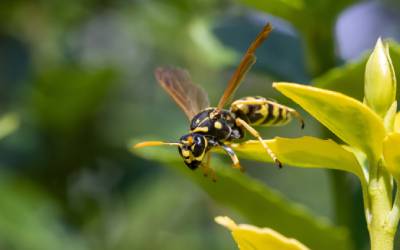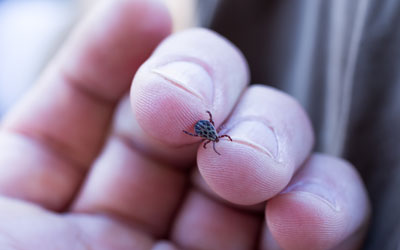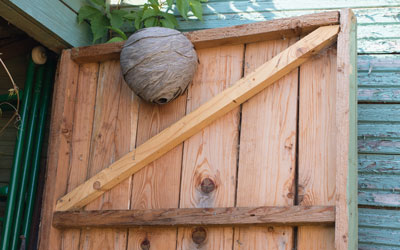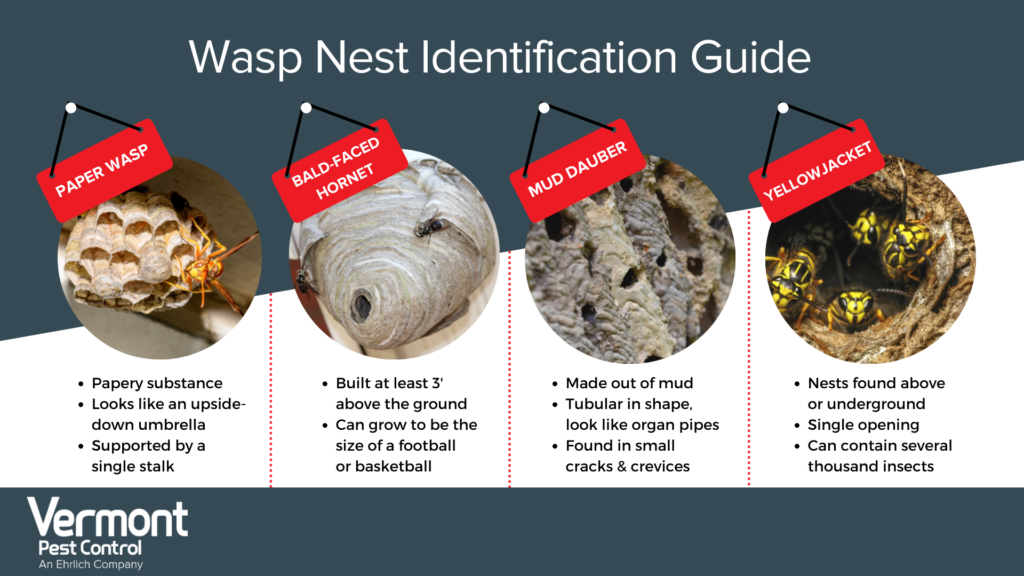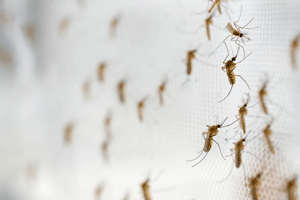There are few things worse than when stinging insects invade your outdoor space in Vermont during the warmer season. It’s enough to ruin any pool party or family get-together, but that’s far from the only social causality. Even a few moments watching the sunset over the horizon can be a moment ruined if these pests build nests and swarm around your premises, annoying and endangering your health and safety. Luckily, Vermont Pest Control is here to help.
Which Stinging Insects Can Nest and Swarm Your Yard?
Here are the common stinging insects you may encounter in Vermont:
- Bald-faced Hornet: This large black and white wasp builds nests of paper-like material in trees, shrubs, or buildings. They are very aggressive and will attack if you disturb their nest. Their stings can cause severe pain and swelling; you need wasp prevention to avoid them.
- Bumblebee: This bee is fuzzy and black and yellow. It nests in the ground, under decks, or in wall voids. It usually does not attack unless you provoke it, but its sting can hurt and trigger allergic reactions in some people. It pollinates plants and flowers, so you should not bother it if you can.
- Carpenter Bee: This bee is black and yellow and makes holes in wood to nest. It looks like a bumblebee but has a shiny abdomen and a loud buzz. It seldom stings, but it can ruin wooden structures and draw woodpeckers.
- Cicada Killer Wasp: This black and yellow wasp is huge. It catches cicadas, paralyzing them with stings. It takes them to burrow in the ground, laying eggs on them. It does not attack humans but can scare you with its size and appearance.
- European Hornet: This is a large brown and yellow hornet. It makes nests of paper-like material in hollow trees, attics, or wall voids. It is active at night and likes lights. It stings many times and causes severe pain and swelling.
- Honeybee: This bee is golden-brown and small. It lives in hives with other bees in colonies. It makes honey and wax and pollinates many crops and flowers. It usually does not attack unless you threaten its hive, but its sting can kill those allergic to its venom.
- Mud Dauber: This wasp is black or metallic blue and slender. It makes nests of mud on walls, ceilings, or eaves. It does not attack and stings rarely, but its nests can look ugly and dirty.
- Paper Wasp: This wasp is brown or yellow and slender. It makes nests of paper that are umbrella-shaped under eaves, decks, or roofs. It is not very aggressive unless you bother it, but its sting can hurt and cause allergic reactions in some people.
- Yellowjacket: This is a small black and yellow wasp. It makes nests in the ground, under rocks or logs, or in wall voids. It likes sugary foods and garbage and attacks easily when you disturb it. Its stings can cause severe pain and swelling. You need to call a pest control expert for yellowjacket prevention on your property.
Stinging Insect Prevention Tips
- Seal any cracks or gaps in your walls, roof, or foundation.
- Keep your trash cans covered and clean, and avoid leaving food or drinks outside.
- Trim your trees and shrubs regularly, and remove any dead or decaying wood that could attract carpenter bees or hornets.
- Avoid wearing bright colors or floral scents that could attract stinging insects.
Call a Professional Exterminator
A professional exterminator can safely remove stinging insects from your property with their expertise and tools. Vermont Pest Control offers effective stinging insect control services to protect your family from these unwanted pests. We will inspect your home for signs of stinging insect activity, identify the type of insect involved, and apply the appropriate treatment to eliminate them for good.

